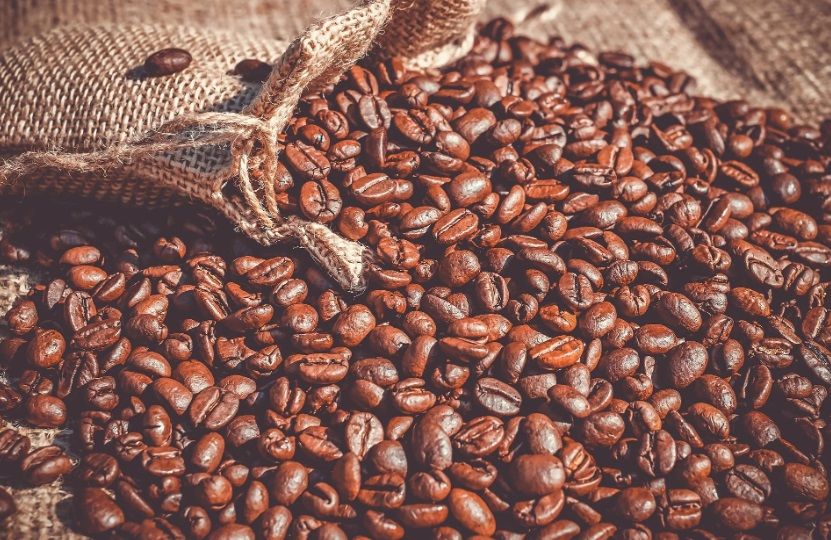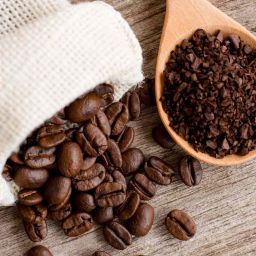
The success of a coffee shop hinges significantly on the quality of the coffee it serves. Selecting the right coffee beans is not just about flavor; it encompasses the essence of your brand and the experience you wish to offer your customers.
This choice affects everything from the aroma that greets customers as they enter to the taste of the final brew, making it a fundamental decision for every coffee shop owner.
Brief Introduction to Coffee Beans Varieties
Coffee beans are primarily categorized into two main types: Arabica and Robusta. Arabica beans, known for their smooth, complex flavor profiles, are favored for their quality and comprise the majority of coffee consumed worldwide.
Robusta beans, on the other hand, offer a stronger, more bitter taste and a higher caffeine content, making them ideal for those seeking a robust espresso. The choice between Arabica and Robusta beans—or a blend of the two—sets the foundation for the coffee shop’s offerings.
Arabica Beans: Characteristics, Best Regions, Benefits for Coffee Shops
Arabica beans are prized for their smooth, nuanced flavors, with hints of fruit and sugar. They thrive in high-altitude regions across Latin America, Africa, and Asia, with Brazil, Colombia, and Ethiopia being notable producers. For coffee shops, offering Arabica beans means providing customers with a high-quality, enjoyable coffee experience that can cater to a range of palates.
Robusta Beans: Features, Leading Producers, Why They’re a Cost-Effective Choice
Robusta beans are known for their strong, robust flavor and higher caffeine content. Predominantly grown in Vietnam, these beans are more resilient to pests and harsh growing conditions, making them a more cost-effective option for coffee shops. They are ideal for creating a bold espresso or for blending with Arabica beans to balance flavor and cost.
Hybrid and Specialty Varieties: Brief Overview
Beyond Arabica and Robusta, hybrid and specialty varieties offer unique flavors and characteristics. These beans can provide coffee shops with a point of differentiation, allowing them to offer exclusive blends or single-origin coffees that appeal to coffee aficionados looking for a distinct tasting experience.
Overview of the Roasting Process: Importance for Flavor
The roasting process is crucial in transforming green coffee beans into the aromatic, flavorful beans we use to brew coffee. It involves heating the beans to high temperatures, causing chemical reactions that develop their rich flavors and aromas. The roast level can significantly influence the taste, aroma, and color of the coffee, making it a key factor in crafting a coffee shop’s signature brew.
Types of Roasts: Light, Medium, Dark, and Their Characteristics
- Light Roasts offer a mild, acidic flavor, preserving the bean’s original taste and highest caffeine content. They are ideal for highlighting the bean’s natural characteristics.
- Medium Roasts provide a balanced flavor, aroma, and acidity, making them popular among a wide range of coffee drinkers. They are often described as having a richer, more rounded flavor than light roasts.
- Dark Roasts feature a bold, smoky flavor with reduced acidity. The beans are roasted until they produce oil on their surface, offering a pronounced bitterness that appeals to those who prefer a strong, robust coffee.
Choosing the Right Roast for Your Shop: How Roast Level Impacts Flavor and Customer Preference
Selecting the appropriate roast level is integral to meeting customer expectations and defining your coffee shop’s identity. Light roasts can appeal to coffee purists interested in the bean’s origin flavors, while dark roasts cater to customers looking for a strong, intense coffee experience.
Medium roasts strike a balance, appealing to the broadest customer base with their harmonious flavor profile. Understanding your target audience’s preferences is key to choosing the roast that best fits your coffee shop’s brand and menu.
Understanding Coffee Bean Grades: Specialty, Premium, Standard, and Their Meanings
Coffee bean grading is a critical process that categorizes beans based on quality and size. The Specialty Coffee Association (SCA) sets the standards, defining Specialty Grade as the highest quality, with beans having the most desirable flavors and minimal defects. Premium Grade follows, offering high quality but with slightly more allowable defects.
Standard Grade beans are of average quality, suitable for mass-market products. This grading impacts the flavor profile and price, guiding coffee shop owners in their selection process.
Impact of Grade on Flavor and Price: Why Grade Matters for Your Coffee Shop
The grade of coffee beans directly influences the taste and cost. Specialty beans, with their superior flavor and rarity, command a higher price but can distinguish a coffee shop by offering a premium experience.
Premium and Standard grades offer more affordable options without significantly compromising on taste, catering to a broader customer base. Understanding these grades helps shop owners align their offerings with their brand identity and customer expectations.
Direct Trade vs Fair Trade: Definitions, Benefits, and Which is Best for Your Shop
Direct Trade eliminates intermediaries, allowing coffee shops to purchase directly from farmers. This model fosters transparency, ensures higher pay for farmers, and often results in higher quality coffee. Fair Trade, on the other hand, certifies that coffee is produced under fair labor conditions and farmers receive a minimum price. Both models support ethical sourcing, but the choice depends on a shop’s commitment to sustainability, quality, and direct relationships with producers.
Organic and Shade-Grown Coffee: Their Importance for Sustainability and Flavor
Organic coffee is grown without synthetic pesticides or fertilizers, enhancing environmental health and often resulting in a cleaner taste. Shade-grown coffee, cultivated under the canopy of trees, promotes biodiversity and bird habitat, and typically produces beans with more complex flavor profiles due to the slower growth rate. Both practices underline a commitment to sustainability and quality, appealing to eco-conscious consumers.
Seasonality and Regionality: How They Affect Availability and Taste
Coffee beans are affected by the season and region in which they’re grown. Seasonality influences the freshness and availability of beans, with different harvest times around the world. Regionality affects flavor, with beans from different areas offering distinct taste notes. Understanding these factors can help coffee shops offer a diverse and dynamic selection, adapting offerings based on the best available beans.
Best Practices for Storing Coffee Beans: To Ensure Freshness
Proper storage is essential to maintain the freshness and flavor of coffee beans. Coffee shops should store beans in airtight containers at room temperature, away from direct sunlight, moisture, and strong odors. This preserves the beans’ natural oils and prevents staling, ensuring the coffee served is as fresh and flavorful as possible.
Impact of Freshness on Flavor: Why It’s Crucial for Coffee Shops
The freshness of coffee beans significantly impacts the taste of the brew. Freshly roasted beans contain gases and compounds that contribute to the coffee’s aroma and flavor profile. Over time, exposure to air, light, and moisture can degrade these compounds, diminishing the coffee’s quality. For coffee shops, serving coffee made from fresh, properly stored beans is crucial to delivering the best possible experience to customers, retaining customers, and fostering a reputation for quality.
FAQs
How to Determine the Best Coffee Bean for Your Customer Base?
Identify your customer base’s preferences through surveys, taste tests, and market research. Consider factors like flavor profiles (e.g., fruity, nutty, floral), roast preferences, and whether your customers prioritize organic or sustainably sourced beans. Offering a variety of beans can cater to diverse tastes and help pinpoint favorites.
Does the Type of Roast Affect Caffeine Content?
Yes, the type of roast affects caffeine content, but not as significantly as many assume. Light roasts have slightly more caffeine by weight because they are denser than dark roasts. However, the difference is minimal when measured by scoop, making it a less critical factor for caffeine content than the bean type or brewing method.
Single Origin vs Blend: Which is Better for My Shop?
The choice between single origin and blends depends on your coffee shop’s concept and customer preferences. Single-origin coffees offer unique, location-specific flavor profiles ideal for customers interested in tasting the distinct characteristics of coffee from different regions. Blends provide a consistent flavor profile, combining beans from various origins to create a balanced taste.
Whole Beans vs Ground: What’s Best for a Coffee Shop?
Offering whole beans ensures maximum freshness and flavor, as coffee begins to lose its qualities shortly after grinding. Providing grinding services allows customers to enjoy fresh coffee at home according to their brewing method. However, having pre-ground coffee can be convenient for quick service or for customers without grinders.
Final Thoughts
Selecting the right coffee beans, understanding the impact of roasting, and adopting sustainable sourcing practices are crucial for the success of a coffee shop.
Balancing quality with customer preferences, whether through single origin or blended beans, and offering both whole and ground options, can cater to a wide audience. Ultimately, the goal is to provide a memorable coffee experience that encourages customer loyalty and sets your shop apart in a competitive market.








